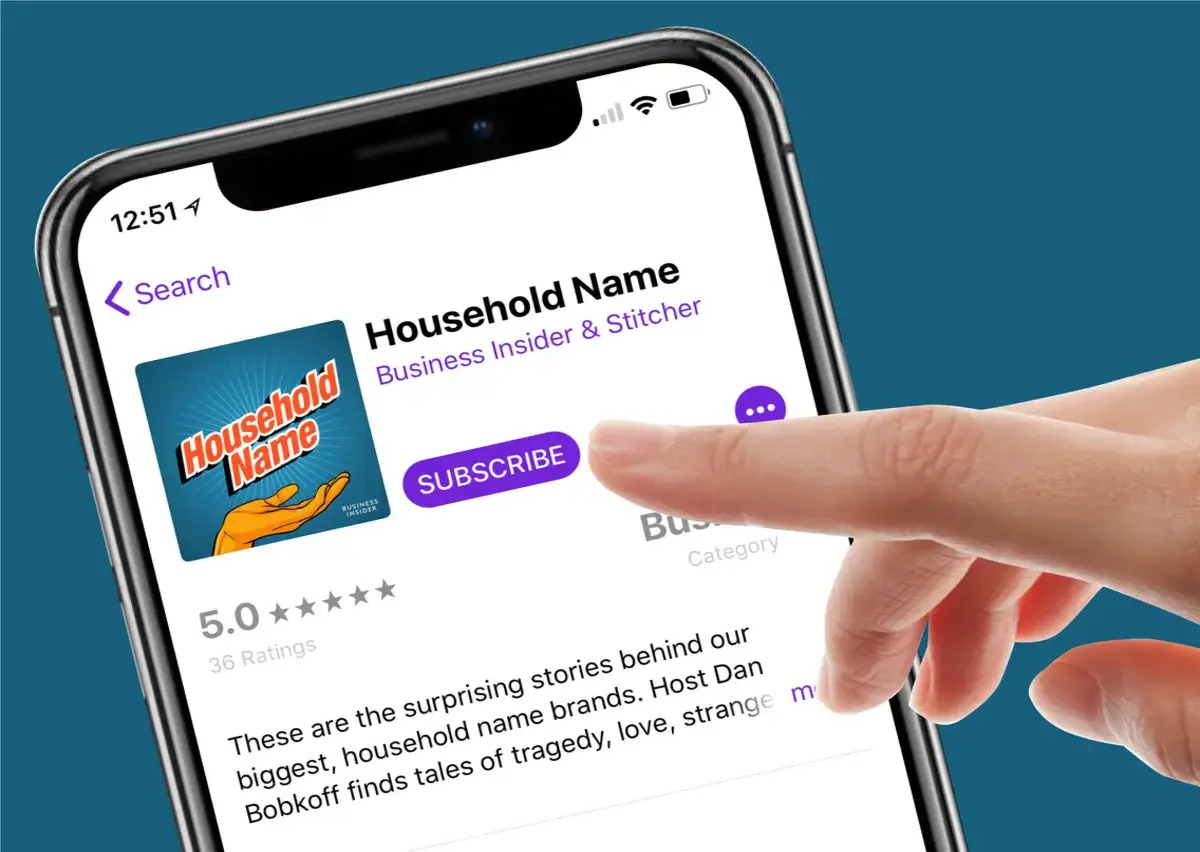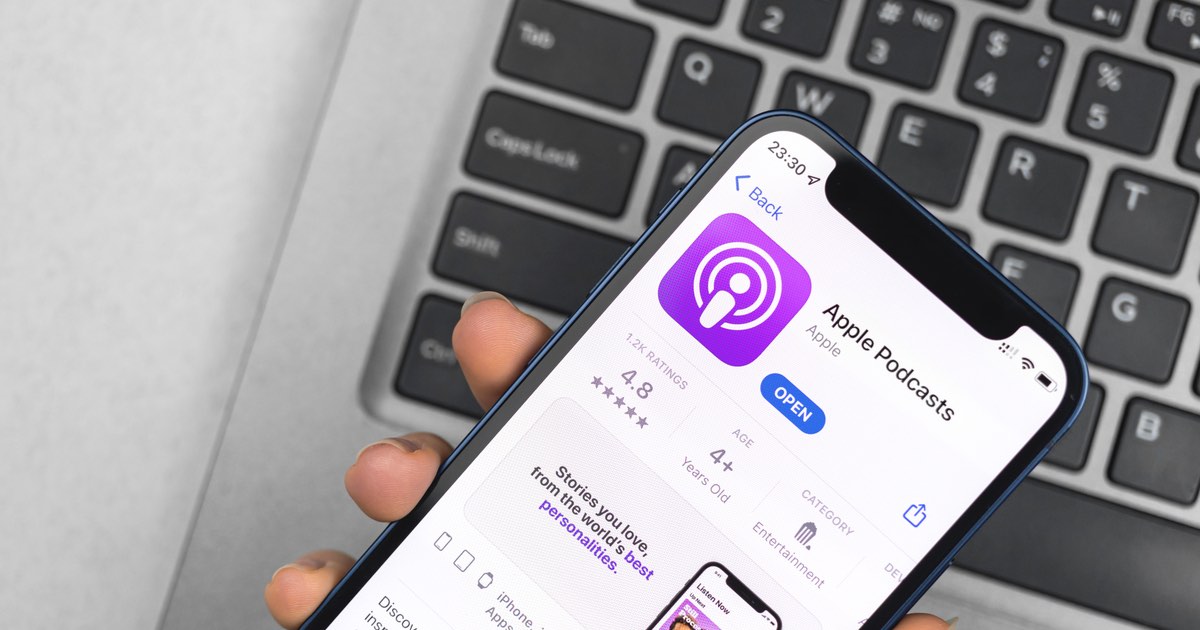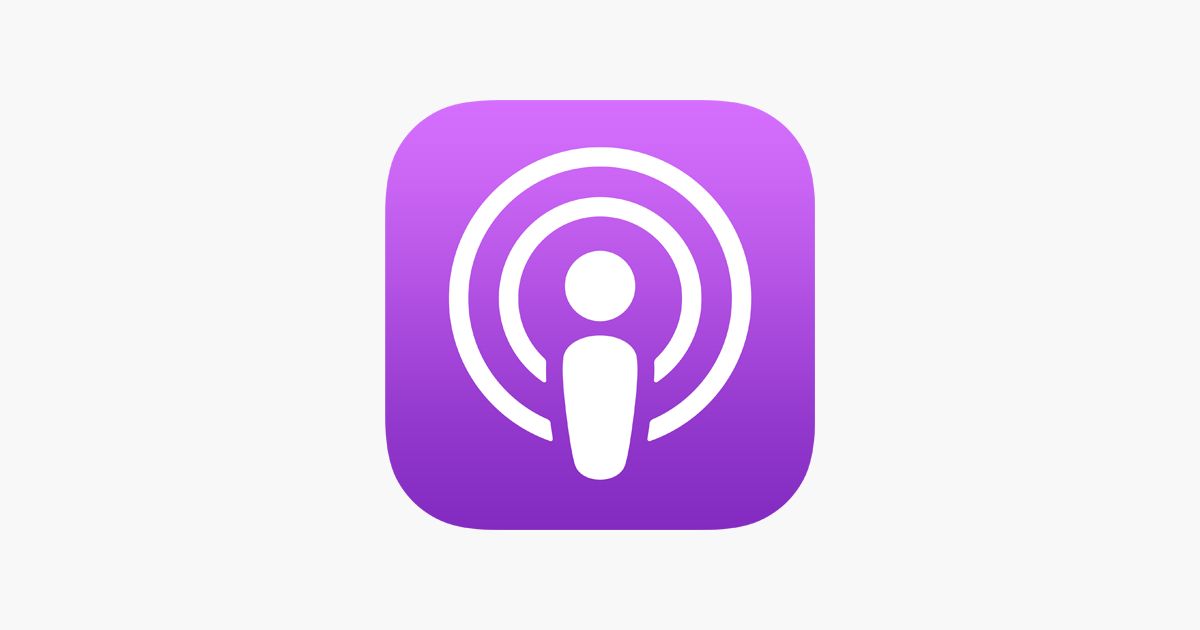Introduction
Welcome to the world of podcasts, where fascinating conversations, gripping stories, and insightful information can be found at the click of a button. With the growing popularity of podcasts, many creators and enthusiasts are curious to know just how many listeners their favorite shows have. Understanding the listenership of a podcast can provide valuable insights for creators and advertisers alike.
Podcast listenership refers to the number of people who listen to a particular podcast. It is an important metric that can help gauge the reach and impact of a podcast. However, unlike other forms of media, such as television or radio, tracking the exact number of listeners for a podcast can be challenging. There is no standardized method in place to provide accurate and real-time listener data.
In this article, we will explore various methods and tools that can help you get an estimate of how many listeners a podcast has. Whether you are a podcast creator looking to understand your audience or a marketer seeking insights for advertising opportunities, we have got you covered.
It is important to note that the methods we will discuss provide estimates and insights, but they may not offer an exact number of listeners. The podcasting industry is evolving, and advancements in tracking methods may emerge in the future. However, for now, let us dive into the available techniques that can give us a glimpse into podcast listenership.
Understanding Podcast Listenership
Before delving into the methods for determining podcast listenership, it is important to have a clear understanding of how listeners engage with podcasts. Unlike traditional broadcast media, podcasts offer listeners the flexibility to consume content on their own terms. This unique aspect of podcasting presents challenges when it comes to tracking listenership.
Unlike television or radio, where viewers or listeners tune in at a specific time, podcast listeners have the freedom to choose when and where they listen to episodes. This means that listenership is dispersed across various devices and platforms, making it difficult to obtain accurate and comprehensive data.
Podcast listenership can be categorized into two main types: downloads and streams. Downloads refer to episodes that are manually saved to a device for offline listening, while streams involve listening to episodes directly through streaming platforms or apps.
Tracking downloads and streams is vital for understanding listenership. It provides insight into the popularity and reach of a podcast. However, it is important to note that these numbers may not represent the total number of listeners. If multiple people listen to a podcast on the same device or share downloaded episodes, it can distort the actual listener count.
Additionally, podcast listenership experiences can vary across different platforms and directories. Some podcasts may be exclusively available on certain platforms, limiting the potential audience and affecting the overall listenership. Therefore, it is essential to consider and analyze data from multiple sources to gain a comprehensive understanding of podcast listenership.
Furthermore, it is crucial to examine other factors beyond the number of listeners to assess the success of a podcast. Engagement metrics such as user retention, episode duration, and social media interaction also play significant roles in understanding the impact and influence of a podcast.
Now that we have a solid foundation for understanding podcast listenership, let us explore the various methods available to estimate the number of listeners a podcast has. By employing these techniques, podcast creators and marketers can gain valuable insights into their audience and make informed decisions about content creation and advertising strategies.
Ways to See How Many Listeners a Podcast Has
While obtaining exact listener numbers for a podcast can be challenging, there are several methods and tools available to estimate the number of listeners. By combining data from different sources, podcast creators can gain insights into their audience size and reach. Here are some effective ways to determine how many listeners a podcast has:
- Analyzing Download and Streaming Numbers: One way to gauge listenership is by analyzing download and streaming numbers. Many podcast hosting platforms provide statistics on the number of downloads and streams per episode. However, it is important to remember that these numbers reflect the number of downloads or streams, not necessarily the number of unique listeners.
- Using Hosting and Analytics Platforms: Podcast hosting platforms often offer advanced analytics and tracking features that can provide more detailed insights into listenership. These platforms can provide information on important metrics such as unique downloads, geographic distribution, listening duration, and subscriber growth over time.
- Utilizing Podcast Directories and Search Engines: Podcast directories like Apple Podcasts, Spotify, and Google Podcasts can offer valuable information about a podcast’s popularity and listenership. These platforms may provide visibility rankings or ratings based on user engagement, giving podcast creators an idea of their audience size.
- Evaluation through Social Media and Reviews: Monitoring social media platforms and podcast review sites can provide additional insights into listenership. Paying attention to social media mentions, engagement, and user reviews can give an indication of how widely a podcast is being discussed and enjoyed.
While this data may not directly translate into listener numbers, it can provide a qualitative assessment of the podcast’s impact.
5. Partnering with Market Research Companies: Another option is to collaborate with market research companies that specialize in podcast audience measurement. These firms employ advanced methods like panel-based surveys or device tracking to provide more accurate insights into listenership.
While these methods offer valuable insights into podcast listenership, it is important to remember that they provide estimates rather than precise numbers. Each approach has its own limitations, and combining data from multiple sources can help paint a more accurate picture of a podcast’s audience. By utilizing these techniques, podcast creators and marketers can make informed decisions and tailor their content to maximize engagement.
Analyzing Download and Streaming Numbers
Analyzing download and streaming numbers can serve as a starting point for estimating podcast listenership. Many podcast hosting platforms provide basic statistics that offer insights into the popularity of individual episodes. However, it is crucial to remember that these numbers showcase the number of downloads or streams, not necessarily the number of unique listeners.
By examining download and streaming data, podcast creators can identify trends and patterns in listenership. They can analyze which episodes perform well and generate more downloads or streams. These numbers can also help creators understand peak listening times and popularity across different platforms.
It is worth noting that download and streaming numbers can be influenced by various factors. For instance, some listeners may download episodes but never actually listen to them, inflating the download count. On the other hand, streaming numbers might be affected by listeners who start an episode but don’t listen to it in its entirety.
Despite these limitations, tracking download and streaming numbers can provide valuable insights into a podcast’s engagement and popularity. It allows creators to identify episodes that resonate with their audience, enabling them to focus on producing similar content that appeals to their listeners.
Additionally, these statistics can help creators evaluate the effectiveness of promotional efforts. By tracking the impact of marketing campaigns on download and streaming numbers, podcasters can assess their reach and identify which strategies are generating increased listenership.
While download and streaming numbers serve as indicators of engagement, it is essential to combine this data with other metrics to gain a comprehensive understanding of listenership. By utilizing hosting platforms that offer advanced analytics and tracking features, podcast creators can delve deeper into their audience’s behavior and preferences.
Overall, analyzing download and streaming numbers is a valuable method to estimate podcast listenership. It provides an initial insight into the popularity of a podcast and helps creators make data-driven decisions when it comes to content creation and marketing strategies. However, it is important to remember that these numbers should be considered alongside other metrics and data sources to get a more accurate representation of a podcast’s listenership.
Using Hosting and Analytics Platforms
Hosting and analytics platforms specifically designed for podcasts provide podcast creators with more detailed insights into their listenership. These platforms offer advanced tracking and analytics features, allowing creators to access a wealth of data to estimate the number of listeners a podcast has.
One of the key advantages of using hosting platforms for analytics is the ability to track unique downloads. These platforms can provide data on the number of unique devices or IP addresses that have downloaded an episode, giving a better understanding of the actual listener count. This metric is crucial in differentiating true listeners from repeat downloads on the same device.
Hosting platforms also offer information on geographic distribution, allowing creators to identify which regions have the highest listenership. This data can be valuable for targeting specific audiences or tailoring content to suit different regions.
Additionally, analytics on hosting platforms can provide insights into listener behavior, such as how long listeners engage with episodes and when they drop off. This information can help creators evaluate episode length, content structure, and audience engagement levels.
Another useful feature provided by these platforms is subscriber growth over time. Tracking the growth of subscribers can indicate whether a podcast’s reach is expanding or stagnating. It can also provide insights into the effectiveness of promotional efforts and marketing strategies.
Furthermore, hosting platforms often integrate with podcast directories and distribution platforms, allowing creators to monitor their performance in these channels. By analyzing the visibility, rankings, and engagement metrics in these directories, podcasters can gain a better understanding of their potential listenership.
Overall, utilizing hosting and analytics platforms offers podcast creators access to more comprehensive data, allowing for a deeper understanding of listenership. By leveraging unique download data, geographic distribution, listener behavior, and subscriber growth, creators can estimate the number of listeners for their podcast more accurately.
However, it’s important to note that hosting and analytics platforms vary in terms of the features they offer, so it’s recommended for creators to explore different options and choose a platform that best suits their needs.
Utilizing Podcast Directories and Search Engines
Podcast directories, such as Apple Podcasts, Spotify, and Google Podcasts, as well as search engines, can provide valuable insights into a podcast’s popularity and listenership. These platforms offer visibility rankings, ratings, and user engagement metrics that can help estimate the number of listeners a podcast has.
Podcast directories like Apple Podcasts often showcase popularity metrics such as “Top Charts” or “Trending” sections, which display podcasts with high listenership. While these rankings are not solely based on listener numbers and include other factors like engagement and reviews, they still give creators a sense of their podcast’s overall popularity.
Additionally, podcast directories allow users to rate and review podcasts. Monitoring these reviews can provide valuable feedback from listeners and give an indication of the size of the podcast’s audience. Creators should pay attention to the quantity and sentiment of reviews to understand the level of engagement and resonance with their audience.
Search engines like Google can also be utilized to estimate a podcast’s popularity. Searching for a podcast’s name or related keywords can provide insights into its online presence, including mentions in news articles, blog posts, interviews, or other forms of media coverage. This information can help gauge the podcast’s overall visibility and potential listenership.
Moreover, some podcast directories and search engines offer analytics and metrics, such as the number of listens or plays, that can provide further insights into a podcast’s reach. These metrics, although not available for all platforms, can help creators estimate the number of listeners to a certain extent.
By leveraging podcast directories and search engines, creators can gain a general idea of their podcast’s popularity and potential listenership. While these methods do not provide exact listener numbers, they offer a qualitative assessment of a podcast’s visibility and engagement within the podcasting community as well as the broader online landscape.
It is important to note that podcast directories and search engine rankings can vary depending on factors such as the podcast’s genre, niche, and geographical location. Therefore, creators should consider multiple directories and search engines to get a comprehensive understanding of their podcast’s listenership.
Overall, utilizing podcast directories and search engines can provide valuable insights into a podcast’s popularity and potential listenership. By monitoring rankings, reviews, and engagement metrics, creators can estimate the size of their audience and assess their podcast’s reach within the podcasting community.
Evaluation through Social Media and Reviews
Social media platforms and podcast review sites offer another avenue to estimate a podcast’s listenership. By monitoring social media mentions and engagement, as well as user reviews, creators can gain valuable insights into the reach and impact of their podcast.
Social media platforms like Twitter, Facebook, and Instagram provide a space for listeners to share their favorite podcasts, engage in discussions, and recommend episodes to others. By monitoring these platforms, creators can gauge the level of enthusiasm and buzz surrounding their podcast. The number of followers, likes, shares, and comments can give an indication of the podcast’s popularity and potential listenership.
Carefully analyzing social media interactions can help identify devoted fans who actively engage with the podcast and spread the word to their networks. Additionally, podcast creators can identify trends or patterns in listener feedback on social media, helping them understand the preferences and interests of their audience.
Podcast review sites are also a valuable source of insights. Platforms like Podchaser or Apple Podcasts allow listeners to leave ratings and reviews for podcasts. By monitoring these reviews, creators can gather feedback on their podcast’s content, production, and overall appeal.
Although social media mentions and podcast reviews do not directly provide exact listener numbers, they offer a qualitative assessment of a podcast’s engagement and impact. Creators can assess the quantity and sentiment of mentions and reviews, which can give them an idea of their podcast’s listenership size.
Furthermore, reviews and social media interactions can lead to broader exposure for a podcast. Positive reviews and word-of-mouth recommendations can attract new listeners, potentially increasing the overall listenership over time. It’s essential for creators to actively engage with their audience on social media, responding to comments and fostering a sense of community around their podcast.
Creators should also pay attention to podcasts that are frequently mentioned or recommended by influential individuals or media outlets. This can provide insights into the popularity and potential reach of similar podcasts, helping creators estimate their own listenership in comparison.
Overall, evaluating social media interactions and podcast reviews offers creators a qualitative understanding of their podcast’s reach and engagement levels. While these methods do not provide exact listener numbers, they provide valuable insights into the level of enthusiasm and interaction within the podcast’s audience, allowing creators to make informed decisions about content and engagement strategies.
Partnering with Market Research Companies
For podcast creators seeking a more accurate and comprehensive understanding of their listenership, partnering with market research companies specializing in podcast audience measurement can be a viable option. These research firms employ advanced techniques to provide more precise insights into a podcast’s audience and reach.
One method employed by market research companies is panel-based surveys. They recruit a representative sample of individuals who regularly listen to podcasts and collect data through surveys or interviews. This approach allows for a deeper understanding of listener demographics, preferences, and behaviors.
Another technique used by research companies is device tracking. By leveraging specialized software or apps, they can collect data on podcast listening habits across various devices and platforms. This method provides detailed information on listening patterns, duration, and engagement.
Partnering with market research companies can offer creators access to data that goes beyond the limitations of hosting platforms, directories, and social media engagement. These companies provide in-depth insights, such as listener profiles, consumption habits, and even comparisons to other podcasts in the same genre or niche.
However, it is important to note that partnering with market research companies usually involves financial investment due to the specialized nature of their services. Therefore, it may be a more feasible option for podcast creators with bigger budgets or those looking for highly accurate and granular data.
When selecting a market research company, creators should consider their expertise in podcast audience measurement, their track record, and the methodologies they employ. It is crucial to partner with a reputable and reliable firm to ensure the accuracy and quality of the data collected.
Overall, partnering with market research companies offers podcast creators the opportunity to obtain more accurate and comprehensive insights into their listenership. By leveraging panel-based surveys, device tracking, and other advanced techniques, these companies provide valuable data that can inform content decisions, advertising strategies, and audience targeting.
While this method can provide valuable insights, it is worth mentioning that the scope and accuracy of the data will depend on the specific capabilities and methodologies of the market research company. Creators should consider this option in conjunction with other methods to gain a holistic understanding of their podcast’s listenership.
Conclusion
Estimating the number of listeners a podcast has can be a challenging task, but by utilizing various methods and tools, podcast creators can gain valuable insights into their audience size and engagement. While these methods provide estimates rather than precise numbers, they offer valuable information that can inform content creation, marketing strategies, and audience targeting.
Analyzing download and streaming numbers can provide a general sense of a podcast’s popularity and help creators identify trends in listenership. Hosting and analytics platforms offer more in-depth data, including unique downloads, geographic distribution, listener behavior, and subscriber growth over time.
Podcast directories and search engines contribute to the estimation process by showcasing visibility rankings, ratings, and user engagement metrics. Monitoring social media interactions and podcast reviews allows creators to assess their podcast’s reach and impact within the podcasting community and online landscape.
For creators seeking more accurate and detailed insights, partnering with market research companies specializing in podcast audience measurement can provide valuable data through panel-based surveys or device tracking techniques. However, this option may require a financial investment.
It is important to remember that estimating podcast listenership is not an exact science, and the available methods have their limitations. Creators should consider combining data from multiple sources and interpreting the results in context.
In the dynamic and evolving landscape of podcasting, understanding listenership is a valuable asset for creators and marketers. By using the methods discussed in this article, podcast creators can gain a better understanding of their audience, make data-informed decisions, and continue to produce captivating content that resonates with their listeners.

























